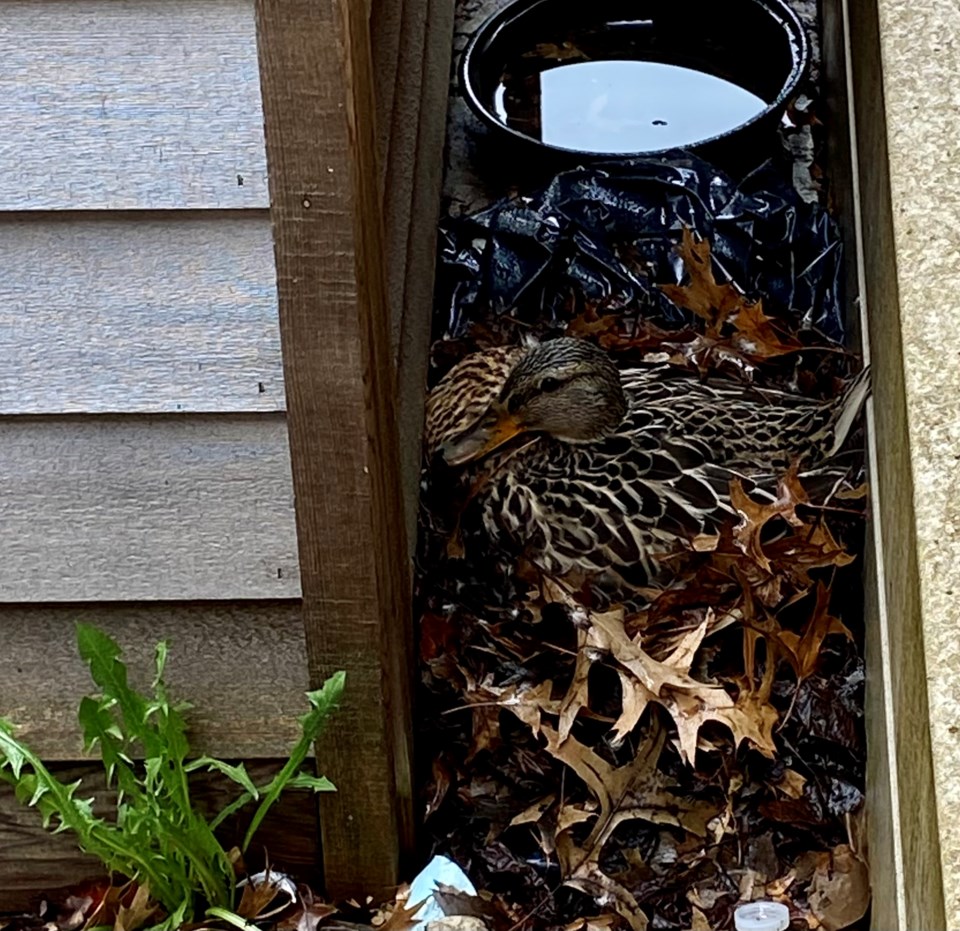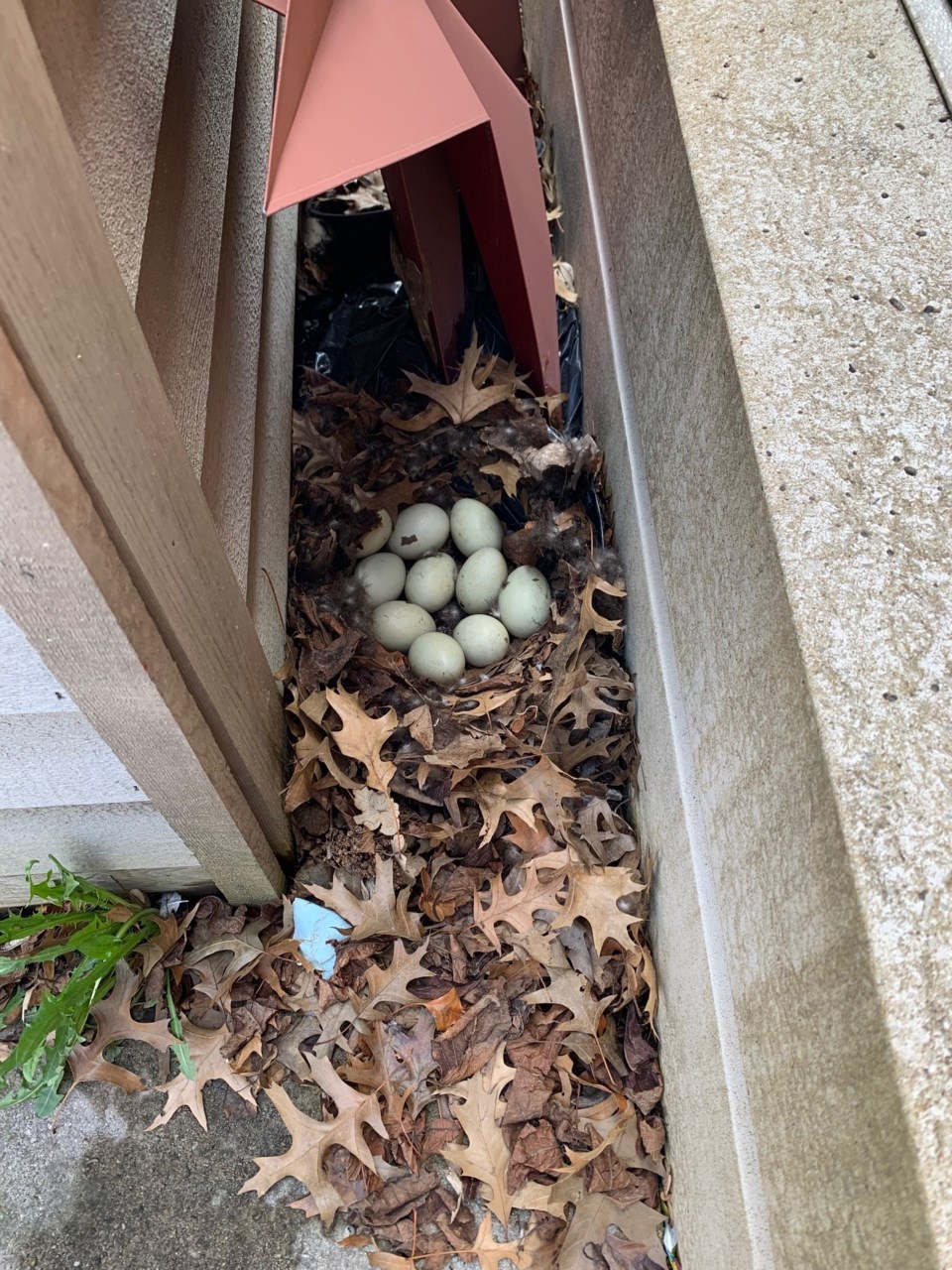It never fails to be an attraction for Barrie library staff and patrons, even though it’s turned into an annual affair.
'Daisy' was spotted on bed of leaves in a protected area alongside a shed on the rooftop garden of the Barrie Public Library’s downtown branch on Worsley Street around the second week of April, harbouring a nest of 10 eggs.
Given that mallards habitually nest for 28 days, library staff figure she’ll be marching out the door with her brood of ducklings in early May.
“It’s a nice shade with the shed, so she looks happy,” says Lauren Jessop, chief executive officer of the Barrie Public Library. “We haven’t seen her male friend, but usually he is around.
“For years we’ve been having ducks nest up on the roof garden and it’s kind of exciting because it’s fun to watch her," Jessop added.

Whether it’s the same duck that returns to the rooftop patio every year or another that has also found it to be a reasonable nesting spot, despite its unusual location, Jessop can’t say for sure.
Odds are, though, that it’s the same one, explains Jenn Lavigne, a conservation program specialist with Ducks Unlimited Canada in Barrie.
“The hens will go back to the same area to nest,” she says. “Typically, they nest on the ground and close to the water.”
For a duck to lay its eggs in such an urban environment is not ideal, Lavigne adds, given the predators in the city. The pro, of course, is that Daisy obviously takes comfort in the library’s environment.
Urbanites are often encouraged to shoo away any duck looking like it may be getting settled to lay its eggs. The natural environment where the ducks have ready access to food and water is, of course, the ideal setting.
On the other hand, the library setting offers a unique connation. It’s a great opportunity, Lavigne says, for people to connect with nature.
“When the ducklings hatch, they’re precocial, and what that means is they can swim and eat and walk right away after they hatch so that they’re ready to go,” Lavigne says.
But given the second-storey setting of the nest, Daisy will undoubtedly need some help working her way through the building and then down the road to the lake.
“They can’t get down, so we have to help her," Jessop says.
Last year, staff gathered the ducklings in a box and walked them down the stairs with their mom nosily following along and then flapping down to the main floor where staff waited with the box ducklings to let her out side door a head down to the waterfront. Once there, they look for a protected spot around Heritage Park where the duck and her brood can easily access Kempenfelt Bay.
In other years, the ducklings all waddled behind her through the library.
Jessop has witnessed this annual ritual since first arriving at the Barrie library seven years ago and knows the roof garden has been used by nesting ducks prior to that.
“Everybody likes being there on duck day. Last year, I brought my daughter and she came down with us. She was late for school, but had a good story to tell when she got there,” Jessop says with a chuckle. “It’s pretty fun.”
The annual affair has been serving as an ongoing learning experience for library patrons and staff, who research the nesting habits of mallards to determine how to best connect the duck and her ducklings to their natural habitat at the right time.
Often, library staff will also put out a display of books about ducks as well. They also put caution tape around her nest.
“People can go up on the roof garden and take a look from afar. Actually, where she is this year, you can actually see her through the library in the children’s area, which is kind of nice,” Jessop says.



